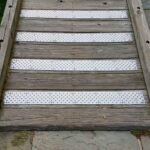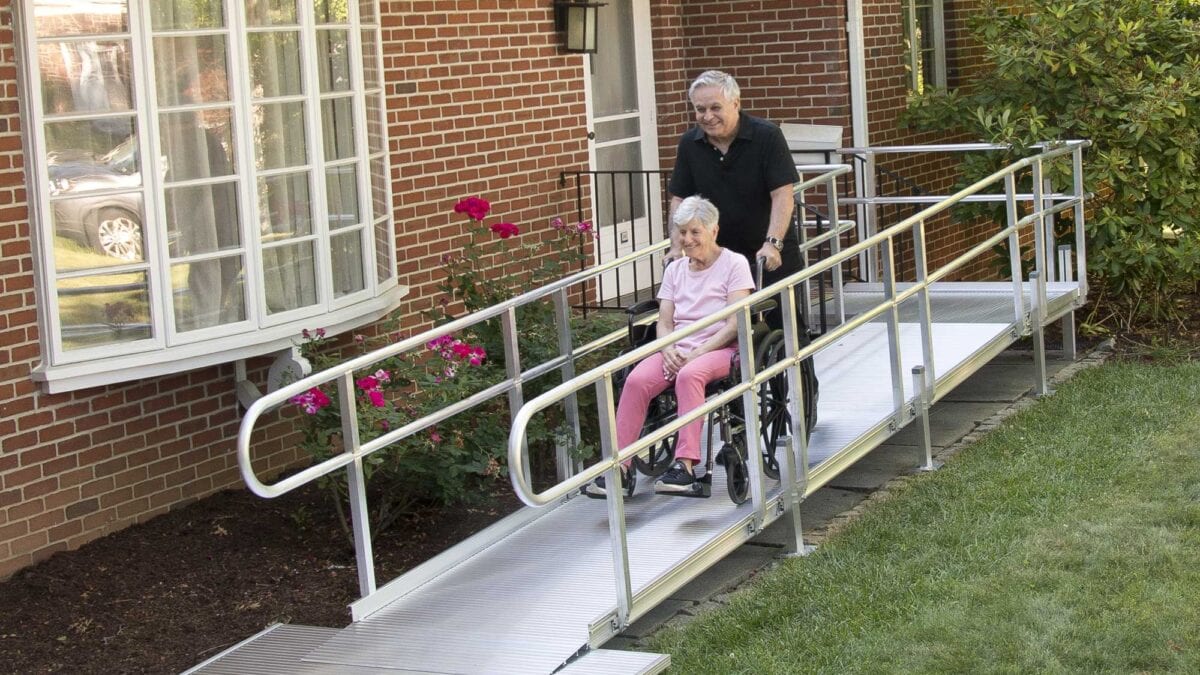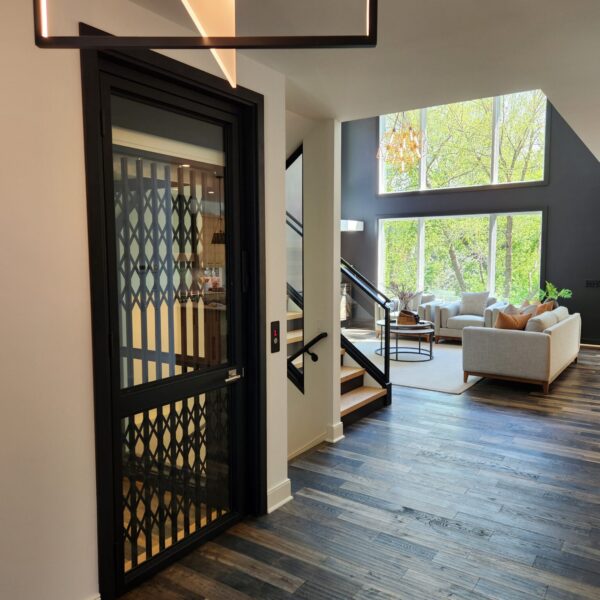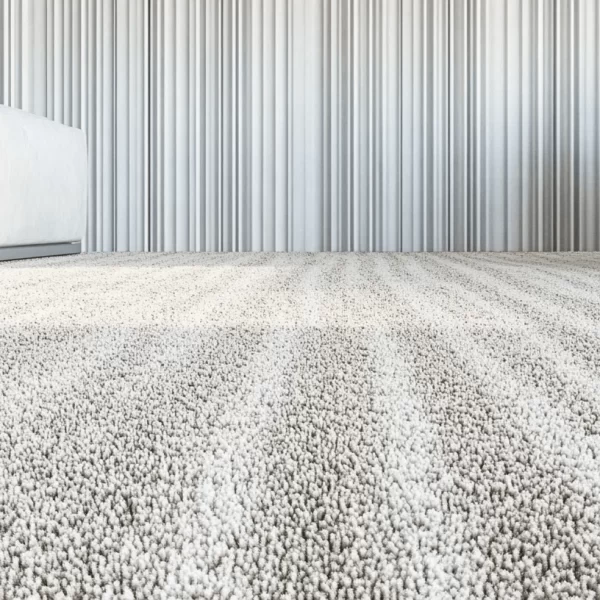
DIY vs. Professional Installation: What to Know Before Building a Wheelchair Ramp
December 10, 2024
Widening Doorways for Accessibility: Why It Matters and How to Do It
December 24, 2024When designing a home for accessibility, one common concern is integrating essential features, like wheelchair ramps, without detracting from curb appeal. A well-designed wheelchair ramp can enhance a home’s functionality and inclusivity while blending seamlessly with its aesthetic. By focusing on materials, design strategies, and landscaping, it’s possible to create a practical and visually appealing ramp. This guide will explore innovative ways to incorporate wheelchair ramps into your home’s exterior design without compromising curb appeal.
Selecting the Right Materials for Style and Durability
The materials you choose for your wheelchair ramp can significantly impact its appearance and longevity. Opting for materials complementing your home’s architecture ensures the ramp integrates seamlessly.
Material Options:
- Wood: Treated or stained wood offers a natural, warm look, ideal for traditional or rustic homes. Be sure to use weather-resistant finishes to prevent rot and maintain the ramp’s appearance.
- Concrete: Durable and versatile, concrete can be textured or stained to match your home’s color palette. Decorative finishes, like stamped patterns, add visual interest.
- Aluminum: Modern homes benefit from lightweight, low-maintenance aluminum ramps, which are available in various powder-coated finishes to match their exteriors.
- Composite Materials: A blend of wood fibers and plastic, composites mimic wood’s look but require less maintenance and resist weathering.
For instance, if your home has wooden railings, using the same wood for the ramp can create a cohesive look. Matching materials to your home’s existing features, such as railings or decking, ensures the ramp enhances rather than detracts from curb appeal.
Designing for Aesthetic Integration
A thoughtfully designed ramp can become a natural part of your home’s exterior, complementing its architectural style and landscaping.
Tips for Seamless Design:
- Wraparound Ramps: Position the ramp to follow the contours of your home, such as wrapping around a porch or leading to a side entrance. This minimizes its visual impact from the front of the house.
- Angled Designs: Instead of a straight ramp, opt for a design with gentle angles or switchbacks. This breaks up the structure’s appearance and creates opportunities for landscaping.
- Covered Entrances: Incorporate a roof or awning over the ramp for added protection and a polished look. This feature ties the ramp into the home’s overall design.
- Blending with Decks or Porches: Extend the ramp to connect with an existing porch or deck, making it feel like a cohesive extension rather than an addition.
By integrating the ramp into the home’s existing lines and structures, it becomes a seamless element of the design.
Using Landscaping to Enhance Visual Appeal
Landscaping can play a vital role in softening the appearance of a wheelchair ramp and creating a harmonious exterior.
Landscaping Ideas:
- Plant Borders: Line the sides of the ramp with shrubs, flowers, or ornamental grasses. This frames the ramp and adds visual interest.
- Climbing Plants: Use trellises or railings for climbing plants, such as ivy or wisteria, to create a green and inviting look.
- Pathway Lighting: Install solar or LED lights along the ramp’s edges to enhance safety and create a warm, welcoming atmosphere at night.
- Retaining Walls: Use stone or brick retaining walls to elevate the landscaping around the ramp, giving it a more polished and intentional appearance.
- Water Features: Add a small fountain or pond near the ramp to draw attention to landscaping rather than the ramp itself.
Well-planned landscaping not only enhances the ramp’s appearance but also increases your home’s overall curb appeal.
Incorporating Decorative Elements and Personal Touches
Adding decorative elements to the ramp can make it a unique and attractive feature rather than just a functional structure.
Decorative Features:
- Custom Railings: Choose railings with ornate designs, such as wrought iron patterns or sleek modern lines. Powder-coated finishes ensure durability and style.
- Color Coordination: Paint or stain the ramp to match the home’s trim, shutters, or other exterior details.
- Mosaic Accents: Incorporate mosaic tiles into concrete ramps for a personalized touch of color and artistry.
- Decorative Panels: Use laser-cut panels or screens along the sides of the ramp to add visual interest and privacy.
- Seasonal Decorations: Use the ramp as a space for seasonal decor, such as potted plants in summer or string lights in winter.
These touches can transform the ramp into a design element that reflects your personality and enhances your home’s charm.
Maximizing Functionality While Maintaining Aesthetics
Functionality should never be compromised for the sake of aesthetics. By combining innovative design features with attractive elements, you can achieve both, giving you the confidence that your ramp is not only functional but also a beautiful addition to your home.
Functional Enhancements:
- Non-Slip Surfaces: Use slip-resistant coatings or textured materials to ensure safety, especially in wet or icy conditions.
- Wide Pathways: Design the ramp to be at least 36 inches wide to accommodate mobility devices comfortably.
- Gentle Slopes: Follow ADA guidelines to maintain a safe and navigable slope (1:12 ratio).
- Landings and Rest Areas: For longer ramps, incorporate level landings where users can pause and rest.
- Weather Resistance: Opt for materials and finishes that resist weathering and require minimal maintenance.
A functional ramp that prioritizes safety and usability will be a lasting investment, blending practicality with beauty. Knowing that your ramp is not only safe and functional but also enhances your home’s curb appeal will bring you a sense of comfort and peace of mind.
Wheelchair ramps are essential for accessibility, but they don’t have to compromise your home’s curb appeal. By choosing the right materials, designing for integration, leveraging landscaping, and adding decorative touches, you can create a ramp that is both functional and attractive. With thoughtful planning, a wheelchair ramp can enhance your home’s overall aesthetic, adding value and inclusivity without sacrificing style. Whether you’re building a new ramp or updating an existing one, these strategies will help you achieve a design that is as beautiful as it is practical, leaving you with a sense of accomplishment and pride in your home’s inclusivity. CAPS Remodeling specializes in designing and installing wheelchair ramps that are as functional as they are stylish. Contact us today to bring accessibility and elegance together in your outdoor space!

Introducing Jeff Cates, the visionary Founder and Owner of CAPS Remodeling. After experiencing a profound personal event involving his son in 2007, Jeff was inspired to serve a higher purpose: to create safer, more comfortable, and independent living conditions for the elderly and disabled by modifying their current homes. Jeff’s deep-seated religious beliefs form the moral compass that steers CAPS daily operations. Apart from his unwavering dedication to his work, Jeff finds joy in boating and cherishing moments with his family.




